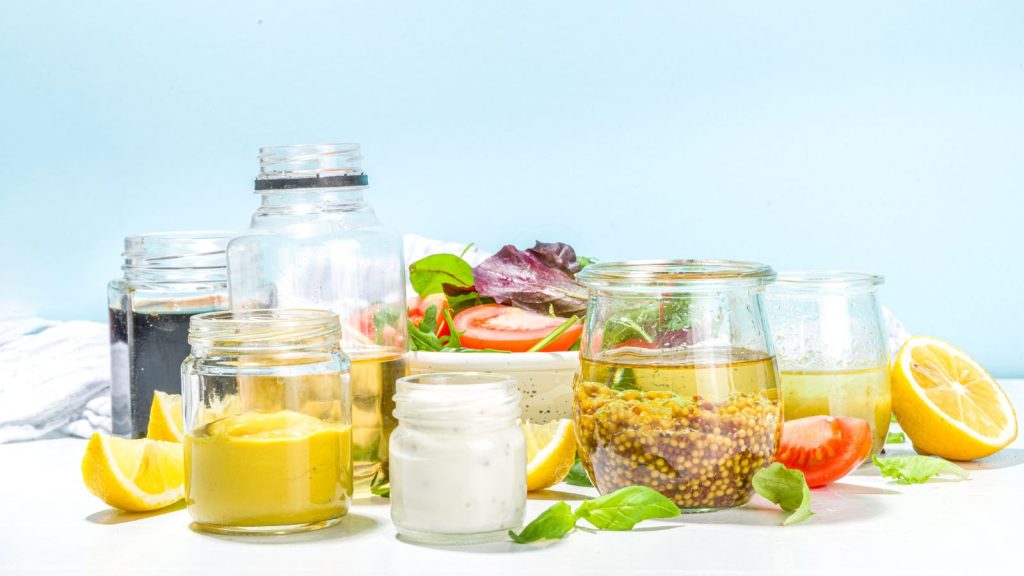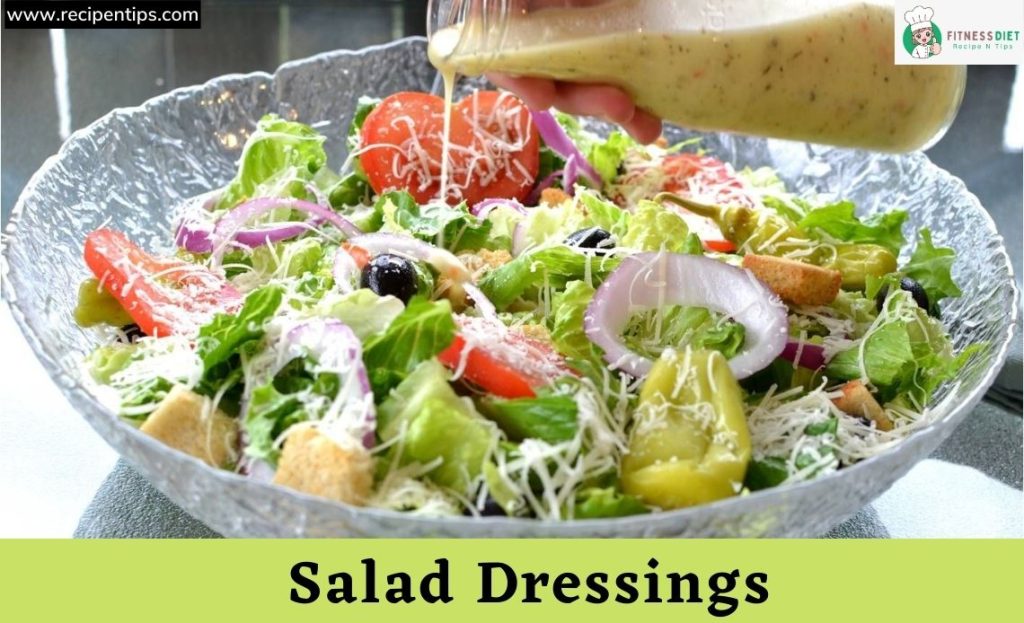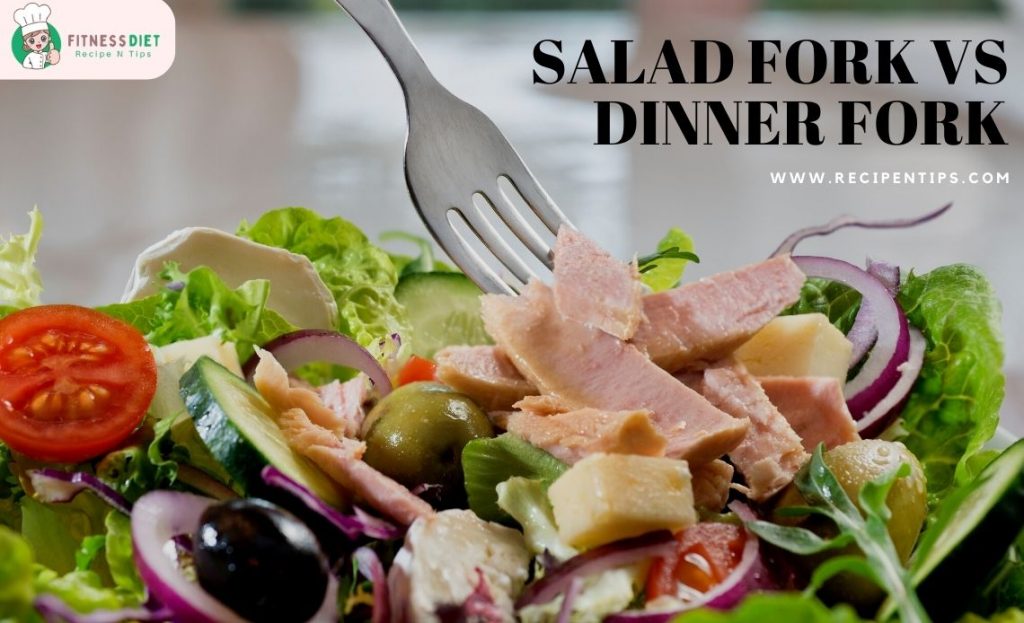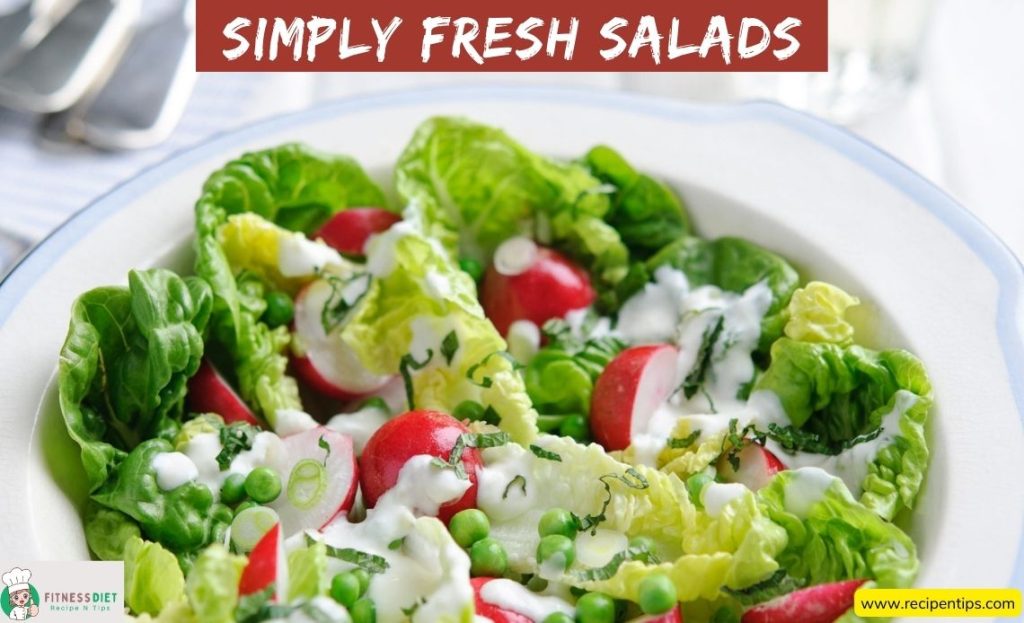The question of how long do salad dressings last has been puzzling people for years. Some say that they only last a few days, while others insist that they can last up to a week. But which is it?
To find out, a team of scientists decided to experiment. They took three different salad dressings and put them in three separate jars. They then labeled each jar with the date that the dressing was put in.
After one week, the scientists checked the jars. The jar with the dressing that was made on Monday still looked great, while the jar with the dressing that was made on Thursday had already started to spoil. This showed that salad dressings do indeed have a shelf life of at least one week.
Salad Dressings
A salad is only as good as its dressing. Whether you prefer a creamy Ranch or a tangy vinaigrette, the right dressing can make all the difference in a dish. However, with so many types of dressings to choose from, it can be hard to know which one to use.
When selecting a dressing for your salad, it is important to consider the type of lettuce you are using. For example, tender greens like baby spinach pair well with light dressings, while sturdier lettuces like romaine can stand up to heartier flavors.
Other ingredients in your salad will also impact your choice of dressing. Fruit and nuts pair well with sweet dressings, while savory toppings like cheese or bacon are best complemented by richer flavors.
Types of Salad Dressings

1. Caesar
Caesar salad dressing is a creamy dressing made with eggs, lemon juice, olive oil, and Parmesan cheese. This dressing is typically used on salads that contain romaine lettuce, croutons, and Parmesan cheese.
2. Ranch
Ranch salad dressing is a creamy dressing made with buttermilk, sour cream, and herbs. This dressing is typically used on salads that contain lettuce, tomatoes, and onions.
3. Blue Cheese
Blue cheese salad dressing is a creamy dressing made with blue cheese, milk, and vinegar. This dressing is typically used on salads that contain lettuce, tomatoes, and bacon.
4. Italian
Italian salad dressing is a vinaigrette made with olive oil, vinegar, and herbs. This dressing is typically used on salads that contain lettuce, tomatoes, onions, and olives.
5. Balsamic Vinaigrette
Balsamic vinaigrette is a vinaigrette made with balsamic vinegar, olive oil, and garlic. This dressing is typically used on salads that contain lettuce, tomatoes, and mozzarella cheese.
6. Honey Mustard
Honey mustard salad dressing is a sweet and tangy dressing made with honey, mustard, and vinegar. This dressing is typically used on salads that contain lettuce, chicken, and bacon.
Refrigeration Requirements For Salad Dressings
- All salad dressings must be refrigerated after opening.
- Store-bought salad dressings will have a “use by” date on the label.
- Homemade salad dressings will last for 3-4 days in the refrigerator.
- Discard any salad dressing that has been left out of the refrigerator for more than 2 hours.
- Salad dressings can be frozen for up to 2 months.
- Thaw frozen salad dressing in the refrigerator overnight before use.
- Do not refreeze thawed salad dressing.
- Use within 1 week of thawing.
Shelf Life for Store-Bought Salad Dressings
The shelf life of salad dressings varies depending on the ingredients; there are a few general guidelines that you can follow. Unopened bottles of dressing usually have a shelf life of one to two years.
Once the bottle is opened, it should be used within six months. If you notice any changes in color or texture, it’s best to throw the dressing out. Likewise, if the dressing starts to separate or form clumps, it’s no longer safe to eat.
Storage Tips for Homemade Salad Dressings

1. Store in a cool, dark place
Homemade salad dressings should be stored in a cool, dark place such as the pantry or cupboard. Light and heat can cause the ingredients in the dressing to break down and spoil more quickly.
2. Store in an airtight container
It is important to store homemade salad dressings in an airtight container such as a mason jar or plastic container. This will help to keep the dressing fresh for longer.
3. Use within 2 weeks
For best quality, homemade salad dressings should be used within 2 weeks of being made. After this time, the flavors of the dressing may start to deteriorate.
4. Shake well before using
Because homemade salad dressings do not contain preservatives, it is important to shake them well before use. This will help to distribute the ingredients evenly and prevent them from separating.
5. Refrigerate after opening
Once a homemade salad dressing has been opened, it should be refrigerated and used within 1 week. This will help to keep the dressing fresh and prevent it from going bad.
6. Discard if moldy or off-color
If a homemade salad dressing starts to look moldy or off-color, it should be discarded, as this is an indication that it has gone bad and is no longer safe to consume.
Expiration Dates Salad Dressings
Expiration dates are intended to tell consumers when a product is no longer safe to consume. However, many people don’t realize that these dates are only guidelines and that most food items are still safe to eat long after the expiration date has passed.
For example, salad dressings are often good for weeks or even months after the expiration date. This is because vinegar, a key ingredient in many salad dressings, has a very long shelf life. Vinegar is one of the few food items that get better with age.
Does salad dressing expire?
Most salad dressings have a “best by” date, which is not the same as an expiration date. The “best by” date simply indicates when the dressing will no longer be at its peak flavor. After that point, the dressing may start to taste flat or dull.
However, it will still be safe to consume. In contrast, an expiration date indicates when the dressing will no longer be safe to eat. At that point, the dressing may spoil or develop harmful bacteria.
However, it’s important to note that expiration dates are often conservative, and dressings may remain safe to consume for some time after they expire.
How long does salad dressing last fresh?

The answer depends on a few factors, including the type of dressing and how it is stored. For example, vinegar-based dressings will last longer than those made with milk or cream. Similarly, dressings stored in the fridge will last longer than those left at room temperature.
In general, however, most salad dressings will only stay fresh for about a week. After that, they will start to develop off-flavors and may even spoil.
How long is dressing good in the refrigerator?
The shelf life of store-bought dressing will depend on the specific ingredients and manufacturing process used. However, most commercial dressings will be safe to consume for at least a few weeks after opening.
If you’re not sure how long your particular dressing has been in the fridge, it’s always best to err on the side of caution and throw it out if there is any sign of spoilage.
How long is the salad dressing well after the expiration date?
It is important to check the label for specific guidance; most salad dressings will remain fresh for several weeks after the expiration date. However, it is important to note that the quality of the dressing may decline over time.
After opening the bottle, you may notice that the dressing becomes dull in color or develops an off flavor. If you notice any of these changes, it is best to throw out the dressing and start fresh.
How long is the salad dressing well for after opening?

Most salad dressings will be fine to use for at least a couple of weeks after opening if stored properly. However, it’s always best to check the label on your particular brand to be sure. If you notice any sign of spoilage – such as mold or an off odor – it’s best to discard the dressing.
How long does homemade salad dressing last in the fridge?
A homemade salad dressing can last up to a week in the fridge, provided it is stored in an airtight container. The key to extending its shelf life is to avoid contact with air, which can cause the dressing to spoil.
When preparing the dressing, be sure to use clean utensils and a clean container.
How long does Italian dressing last after the expiration date?
In general, most dressings will be fine to use for a few weeks after the expiration date. The exception is if the dressing has been opened; once opened, dressings should be used within a week or two.
With that said, it’s always best to use your judgment when deciding whether or not to use expired dressing. If the dressing looks and smells fine, it’s probably safe to use. But if it’s starting to look murky or has an off odor, it’s better to play it safe and toss it out.
How to tell if salad dressing is bad?
Any experienced cook knows that the quality of your ingredients can make or break a dish. This is especially true for salad dressing, which often contains a delicate balance of vinegar, oil, and spices.
When these ingredients go bad, they can ruin the flavor of your salad and make it unappetizing. So how can you tell if your salad dressing has gone bad? Here are a few signs to look for:
- The color has changed – If your salad dressing has turned murky or changed colors, it’s probably time to toss it.
- The texture has changed – If the dressing has separated into layers or become thick and clumpy, it’s no longer safe to eat.
- There is mold growing on it – This is a sure sign that the dressing has gone bad and should be thrown away immediately.
- It smells sour – Vinegar is a key ingredient in many salad dressings, so it’s normal for them to have a slightly acidic smell. However, if the dressing smells particularly sour or vinegary, it’s probably past its prime.
If you’re ever in doubt, err on the side of caution and throw the dressing away. It’s better to waste a few dollar’s worths of ingredients than to risk getting sick.



